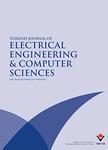版权所有:内蒙古大学图书馆 技术提供:维普资讯• 智图
内蒙古自治区呼和浩特市赛罕区大学西街235号 邮编: 010021

作者机构:Department of Electronics and Communication Engineering Faculty of Engineering Mansoura University Egypt Department of Electrical and Computer Engineering Southern University A&M College Baton RougeLA United States
出 版 物:《Turkish Journal of Electrical Engineering and Computer Sciences》 (Turk J Electr Eng Comput Sci)
年 卷 期:2025年第33卷第3期
页 面:357-371页
核心收录:
学科分类:080801[工学-电机与电器] 0808[工学-电气工程] 08[工学] 0835[工学-软件工程] 0825[工学-航空宇航科学与技术] 0701[理学-数学] 0812[工学-计算机科学与技术(可授工学、理学学位)]
基 金:The authors express their gratitude to Dr Anwar Sayed Abdelhameed from the Electronics Research Institute for his valuable support in simulating the proposed antenna. The authors also express their appreciation to the National Telecommunication Institute (NTI) and ERI for their assistance in fabricating and measuring the antenna. Additionally the authors sincerely thank Apple for their support
主 题:Finite difference time domain method
摘 要:This work describes a microstrip log-periodic dipole array (MLPDA) antenna that uses metamaterials and operates across the whole Ka-band. The suggested MLPDA antenna layout provides a wide bandwidth with fewer dipole elements than traditional MLPDA antennas while maintaining the same resonance frequencies. To reduce size while covering a wide operational spectrum, the antenna design includes bending dipoles as radiating elements, as well as an incomplete ground plane. Furthermore, the proposed MLPDA antenna’s energy loss has been reduced while boosting its signal strength (gain) by inserting a metamaterial-based structure in front of it at a certain distance and on the same substrate. The antenna was initially designed using fundamental mathematical equations, then simulated using the finite difference time domain method, and subsequently fabricated and characterized. Additionally, particle swarm optimization (PSO) was used to optimize the design requirements of the metamaterial layer, partial ground, and bending elements. Simulation and experimental results show good agreement, demonstrating that the optimized MLPDA functions over a wide bandwidth of 25.9 GHz to 45.2 GHz, with slight variances due to fabrication tolerances and measurement conditions. Moreover, the reduction in energy loss achieved by metamaterials directly leads to the stated 4 dB gain increase across the whole Ka-band, improving efficiency and communication range in a variety of applications, including satellite communications, 5G systems, and radar. © TÜBİTAK.